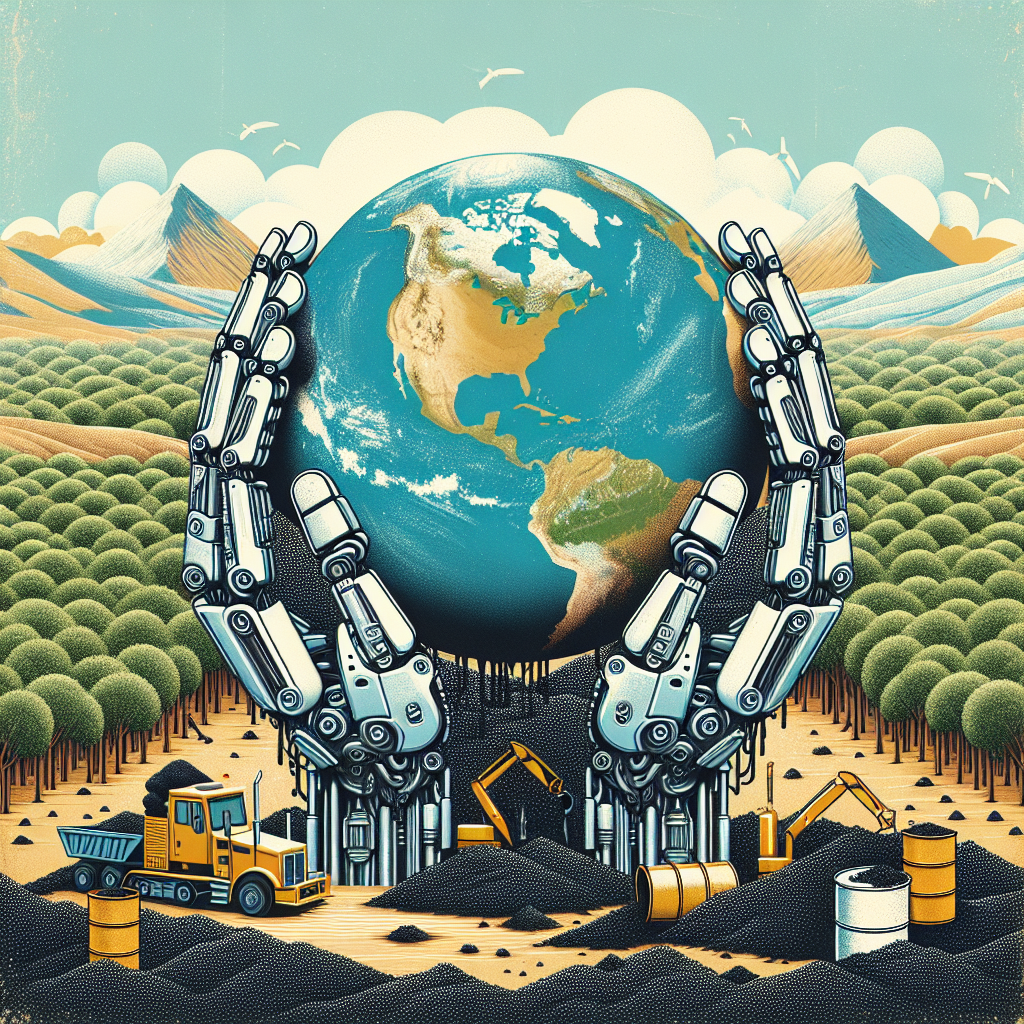In recent years, artificial intelligence (AI) has become increasingly integrated into various industries and aspects of our daily lives. From healthcare to finance to transportation, AI technology is revolutionizing the way we live and work. One area where AI is making a significant impact is in environmental conservation and sustainability. The adoption of AI technology has the potential to address some of the most pressing environmental challenges we face today, from climate change to deforestation to pollution. In this article, we will explore the environmental benefits of AI adoption and how this technology is being used to create a more sustainable future.
One of the key ways in which AI is benefiting the environment is through its ability to optimize resource management. By analyzing vast amounts of data, AI algorithms can identify patterns and trends that humans may not be able to see. This allows organizations to make more informed decisions about how to best use resources such as energy, water, and raw materials. For example, AI can be used to optimize energy consumption in buildings by adjusting heating and cooling systems based on occupancy patterns and weather forecasts. This not only reduces energy costs but also lowers greenhouse gas emissions.
AI is also being used to improve waste management processes. By analyzing data on waste generation and disposal, AI algorithms can help identify ways to reduce waste and increase recycling rates. For example, AI-powered sorting systems can more accurately separate different types of materials, making recycling more efficient. In addition, AI can help predict when waste bins are likely to overflow, allowing for more timely collection and preventing littering.
Another important environmental benefit of AI adoption is its ability to enhance environmental monitoring and conservation efforts. AI-powered drones and satellite imaging technology can be used to track changes in land use, deforestation, and wildlife populations. This data can then be used to inform conservation strategies and protect endangered species. For example, AI algorithms can analyze satellite images to detect illegal logging activities in real-time, allowing authorities to take action more quickly.
AI is also being used to improve agricultural practices and reduce the environmental impact of food production. By analyzing data on soil quality, weather patterns, and crop yields, AI algorithms can help farmers make more informed decisions about when and where to plant crops. This can lead to higher yields, reduced use of pesticides and fertilizers, and more sustainable farming practices. In addition, AI can help optimize supply chains to reduce food waste and emissions associated with transportation.
Overall, the adoption of AI technology has the potential to significantly reduce the environmental footprint of various industries and promote a more sustainable way of living. By optimizing resource management, improving waste management processes, enhancing environmental monitoring, and promoting sustainable agriculture, AI can help address some of the most pressing environmental challenges we face today.
FAQs:
Q: How does AI help in reducing energy consumption?
A: AI can help reduce energy consumption by optimizing heating and cooling systems in buildings, identifying energy-saving opportunities, and predicting energy demand more accurately.
Q: How does AI improve waste management processes?
A: AI can improve waste management processes by analyzing data on waste generation and disposal, optimizing recycling processes, and predicting when waste bins are likely to overflow.
Q: How does AI enhance environmental monitoring efforts?
A: AI enhances environmental monitoring efforts by using drones and satellite imaging technology to track changes in land use, deforestation, and wildlife populations, and inform conservation strategies.
Q: How does AI promote sustainable agriculture?
A: AI promotes sustainable agriculture by analyzing data on soil quality, weather patterns, and crop yields to help farmers make more informed decisions about planting crops, reducing the use of pesticides and fertilizers, and optimizing supply chains to reduce food waste and emissions.

